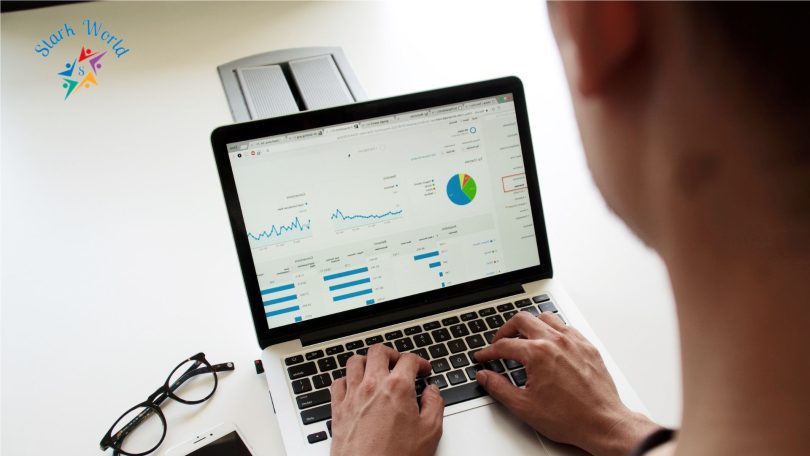Introduction
Safeguarding personal data stands as a paramount concern in our modern digital age. The amount of data that we store and share online has grown exponentially in recent years, making individuals more vulnerable to cyber threats. With the range of security threats that exist, it’s more important than ever to understand the basics of how to protect your data online.
This article outlines the importance of personal data protection, what personal data is, common security threats, and ways to protect it. Additionally, there are tips on how to stay safe online and back up your data, so you can confidently take control of your online security.
Personal data is defined as any data that can be used to identify an individual, such as name, address, date of birth, and contact information. It can be used to identify an individual’s online presence, such as social media accounts, bank accounts, and any other online activity. Types of personal data include passwords, credit card numbers, bank account numbers, and email addresses.
The amount of personal data that people store online is on the rise, and with it, the potential for malicious actors to access this data. Cybercriminals are constantly looking for ways to exploit individuals’ data for their gain. This means that it’s not enough to simply be aware of what personal data is; it’s also important to understand the potential threats to personal data and how to protect it.
Malware and viruses are two of the most common security threats to personal data. These are malicious programs that can infiltrate computers and networks, allowing cybercriminals to access personal data. Cyberattacks, such as DDoS attacks, ransomware, and data theft, are also threats to personal data.
Social engineering is another type of attack that involves manipulating people into revealing sensitive information, such as passwords or bank account numbers. Phishing emails are a form of social engineering in which the attacker pretends to be someone the victim trusts to get them to reveal personal data.
Knowing how to protect your data online is essential for keeping your information safe from malicious actors. There are a few key steps to take to ensure that your data remains secure.
Creating strong passwords, using two-factor authentication, and using a Virtual Private Network (VPN) are some of the most effective ways to protect your data.
Installing antivirus software can also help protect against malware and other security threats. Additionally, it’s important to be aware of malicious websites and adjust your privacy settings on social media and other online accounts. Regularly checking for data breaches can also help you stay on top of your data security.
In addition to these more technical measures, there are also a few other tips to keep in mind when it comes to protecting your personal data online. It’s important to be aware of online scams, limit the amount of personal information that you share online, and back up your data regularly.
By understanding what personal data is, the potential security threats, and a few key measures for protection, you can confidently and safely take control of your online security. This article outlines the importance of protecting personal data online and provides valuable tips on how to do so.
Understanding What Personal Data Is
Personal data is an extremely important aspect of our lives that can be used to identify us online. We must understand what personal data is and how to protect it. To properly protect our data, it’s important to take the necessary steps to ensure that your data is safe and secure.
Definition of Personal Data
Personal data encompasses any information that has the potential to identify an individual. This includes such data as name, address, phone number, email address, social security number, credit card numbers, passwords, date of birth, and any other information that can be used to differentiate one individual from another.
Types of Personal Data
The types of personal data are numerous, but the most common include name, address, phone number, email address, social security number, credit card number, passwords, date of birth, and any medical information. Other types of personal data include biometric data, such as fingerprints and retinal scans, and online identifiers, such as IP address and browser information.
Examples of Personal Data
Examples of personal data can include the following: name, address, phone number, email address, social security number, credit card numbers, passwords, date of birth, medical information, biometric data such as fingerprints and retinal scans, and online identifiers such as IP addresses and browser information.
It is important to understand that personal data comes in many forms and can be used for a variety of purposes. This includes, but is not limited to online purchases, banking, job applications, and social media profiles. It is important to understand how the different types of personal data are used and how to protect it.
It’s also important to understand how companies and organizations store and use your data. Many companies and organizations have a responsibility to protect your data and will have policies in place to do so. It is important to be aware of such policies and to understand how your data is being used.
Overall, it is important to understand what personal data is and to take the necessary steps to protect it. By understanding the types of personal data and how it is used, as well as taking measures to protect it, you can ensure that your data is secure.
Common Security Threats to Personal Data
It is important to understand the common security threats to personal data to protect it. There are a variety of cyber threats that can put your personal data at risk.
Malware and viruses are the most common cyber threats. Malware is malicious software that is designed to damage your devices, steal your data, or gain access to your personal information. Viruses are similar to malware, except they are designed to spread quickly and infect many computers.
Cyberattacks are large-scale attacks on computer networks and systems. Cybercriminals use sophisticated techniques to gain access to data or disrupt the operations of a company or organization. Cyberattacks can be used to steal personal data or damage a system.
Social engineering is a form of cyber attack that exploits people’s natural trust. Social engineering attacks use psychological manipulation to get people to provide access to their data or accounts. For example, a cybercriminal may pose as an employee or a customer representative to get access to your data.
Phishing emails is another type of cyberattack. In a phishing attack, a cybercriminal will send you an email that appears to be from a legitimate source. The email may contain malicious links or attachments that can download malware to your computer, or the email may ask you to provide personal information that can be used for identity theft.
It is important to be aware of the common security threats to personal data and take steps to protect yourself. There are a variety of ways to protect your data and ensure it is secure.
Ways to Protect Your Data Online
It is essential to protect your data online, as it can be used to access your accounts, steal your identity, or even your financial information. There are several ways to do this, and some of them are outlined below.
Create Strong Passwords: The first and most important measure you can take to protect your data online is to create a strong password. A strong password should contain 12 or more characters and should include a mix of letters, numbers, and symbols. Avoid using passwords that include information like your name, address, or date of birth. It is also important to make sure you have a different password for each of your online accounts.
Use Two-Factor Authentication: Two-factor authentication (2FA) is an additional security measure that requires two pieces of evidence to verify your identity. This could include a combination of a password and a code sent to your phone or email address, or biometric authentication like a fingerprint or face recognition. This makes it more difficult for someone to gain access to your accounts and personal data.
Use a Virtual Private Network (VPN): A Virtual Private Network (VPN) creates a secure connection between your computer and the internet. This ensures that your data and information remain safe and secure as it is sent and received online. It also masks your IP address, which makes it difficult for people to track your online activities.
Install antivirus software: antivirus software is a must-have program for protecting your personal data online. This software is designed to scan your device for any malicious software or viruses and remove them. It can also detect suspicious activity and alert you to any potential threats.
Be Aware of Malicious Websites: When browsing online, it is important to be aware of malicious websites. These websites are designed to steal your data, such as credit card information, usernames, passwords, and more. To protect your data, make sure to only visit trusted websites and make sure the website’s address starts with “https://,” as this means the website is secure.
Adjust Your Privacy Settings: Many websites and online services have privacy settings that allow you to control how your personal information is used and shared. Take some time to review the privacy settings of the websites and services you use and make sure they are set to the highest level of security.
Regularly Check for Data Breaches: Another way to protect your data online is to regularly check for data breaches. Several websites offer free services to check if your information has been exposed to a data breach. If you find that your information has been exposed, you should take the necessary steps to protect your data and accounts.
By following these tips, you can ensure that your data is safe and secure online. It is important to remember that protecting your personal data is an ongoing process that requires you to stay vigilant. However, taking the necessary steps now can help you protect yourself and your data in the long run.
Additional Tips
Creating and maintaining strong passwords is an important part of protecting your data online, but there are other measures you can take to ensure that your data is kept safe. It is important to be aware of online scams, limit the personal information you share online, and back up your data in case something goes wrong.
Be aware of online scams
The internet is full of scams, so it is important to stay vigilant when browsing online. Be sure to research any website or product before making a purchase or entering your personal information. Be wary of any emails or text messages that seem suspicious and never click on any links or download any attachments sent by someone you don’t know.
Limit the personal information you share online
It is important to be mindful of the amount of personal information you are sharing online. Use caution when signing up for online services, and check the privacy policies of any apps or websites you use. Be aware of what information you are giving out in social media profiles and what kind of data companies have access to.
Backup your data
Creating backups of all of your data is an important way to keep your information safe. You can use an external hard drive, a cloud storage service, or other backup solutions to keep a copy of your data in a secure location. This way, if your computer or device is ever compromised, you won’t lose your valuable information.
These additional tips can help you protect your data online and stay safe while browsing. It is important to be aware of the potential risks and to take the necessary steps to keep your data secure.
Conclusion
Protecting your data is an important step to stay safe online. Taking the time to understand what personal data is, the common security threats to personal data, and ways to protect your personal data online is the best way to stay secure.
By understanding the definition and types of personal data, being aware of common security threats such as malware and viruses, cyberattacks, social engineering, and phishing emails, and implementing best practices like creating strong passwords, using two-factor authentication, using a Virtual Private Network (VPN), installing antivirus software, being aware of malicious websites, adjusting your privacy settings, and regularly checking for data breaches, you can ensure that your data is protected online.
In addition to these practices, it is also important to be aware of online scams, limit the personal information you share online, and back up your data regularly. Taking these simple steps can give you peace of mind that your data is secure.
Protecting your data online is an important way to stay safe from identity theft, online fraud, and other malicious activities. By taking the necessary steps to protect your data, you can ensure that your information and data remain secure and private.







